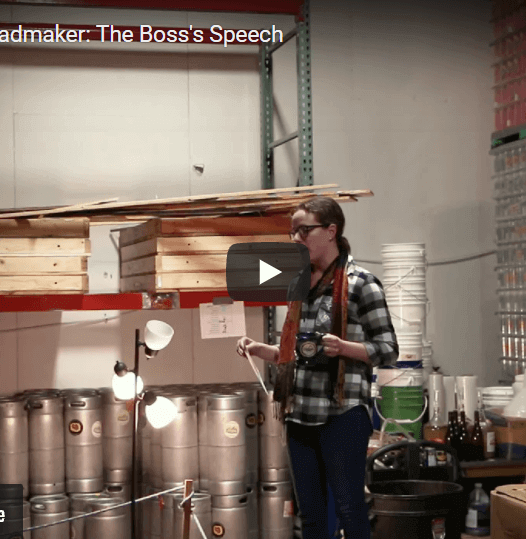Developing a Mead Recipe
Your First Batch of Mead
A Stalled Batch and What We Did About It
TRANSCRIPT
I wanted to thank all of you who have been telling me to monetize these videos because you'd love me to make some money off of your watching of them. But do you think, if I really wanted to make money, I would have become a meadmaker?
Welcome to Ask the Meadmaker, where I, Ricky the Meadmaker, answer your questions about mead making, mead drinking, mead brewing, and really any question you're willing to send to me.
Our first question this week comes from Ned, who wants to know if I have a good recipe for a braggot? And the answer is I cannot legally make a bracket because of weird federal laws in the United States. But I do have a good recipe. Find a good beer that you really like to brew. In my case, I like to make a Wee Heavy, and then add a bunch of honey to it.
Nick wants to know how to keep his batch sterile (I think he means sanitized in the case of mead, but he might mean sterile if he boils it) when he adds oxygen. Now the answer to that is if you want to add pure medical oxygen, which is what a lot of people do, it should go in more or less sterile. But most people just take their bucket and shake it a lot, which means they're getting the air atmospheric, which is nitrogen, oxygen, CO2, and a very small amount of bacteria, wild yeast and things like that, rarely enough to cause a problem.
Here's a really important clarification from kyraPH1234k, who wants you to know that I was mistaken. And you're right. I was mistaken when I said methanol doesn't really occur in fermentations. It really does, but in very small quantities, so when cellulose is broken down it does often become methanol instead of ethanol, which is toxic. That said, orange juice and apple juice both also have methanol in them. The risk is when you concentrate them incorrectly. And in distilling, if you don't cut your heads properly, you will increase the concentration of methanol rather than removing it. So, at home, if you're just brewing which is legal, you are not at risk for methanol toxicity. If you are distilling, which is not legal, you'd better do a lot of research.
Our next question comes from Mark and I've actually gotten it several times and somehow never answered it before. He has a stalled batch. An all-too-common problem. He's already added nutrient and more energizer and more nutrient. He's afraid if you had any more, it will cause problems. Now he's thinking of adding more yeast. It's been a few weeks since he's seen a bubble. It's actually been a few months because it's taken me a long time to answer this question, but will he cause more harm than good at this point by adding more yeast? The answer is if your final gravity is not where you need it to be, adding more yeast is almost always the right choice.
Our last question is a reader and this is really exciting. So, our printer apparently ran out of ink and someone got words onto their phone for me, so I'm going to read it out loud to you from a phone.
“Hello Mr. The Meadmaker. I'm a Rhode Island homebrewer. Unnecessary detail. And I was wondering if you'd recommend that if I were to try to make a guacamole wine or mead that I make a separate wine for each ingredient for example, an onion wine, tomato wine, garlic wine, avocado wine, etc. (spelled incorrectly) and mix them together to make a blended guacamole wine or should I throw all the ingredients in a carboy together and make one batch of guacamole wine.”
I feel like I can only focus on the first part of this. If you'd recommend anything that comes after that, relies on my recommending that you make a guacamole wine. And I do. You should do it. I made a pizza mead one time, and it was wildly popular with two people who are named Matt and Scott. So, if you need anyone else to support you in this almost certainly idiotic endeavor. I'll have them send emails your way.
That was our last question this week. Keep sending them and I'll get to them as soon as possible. Cheers.




